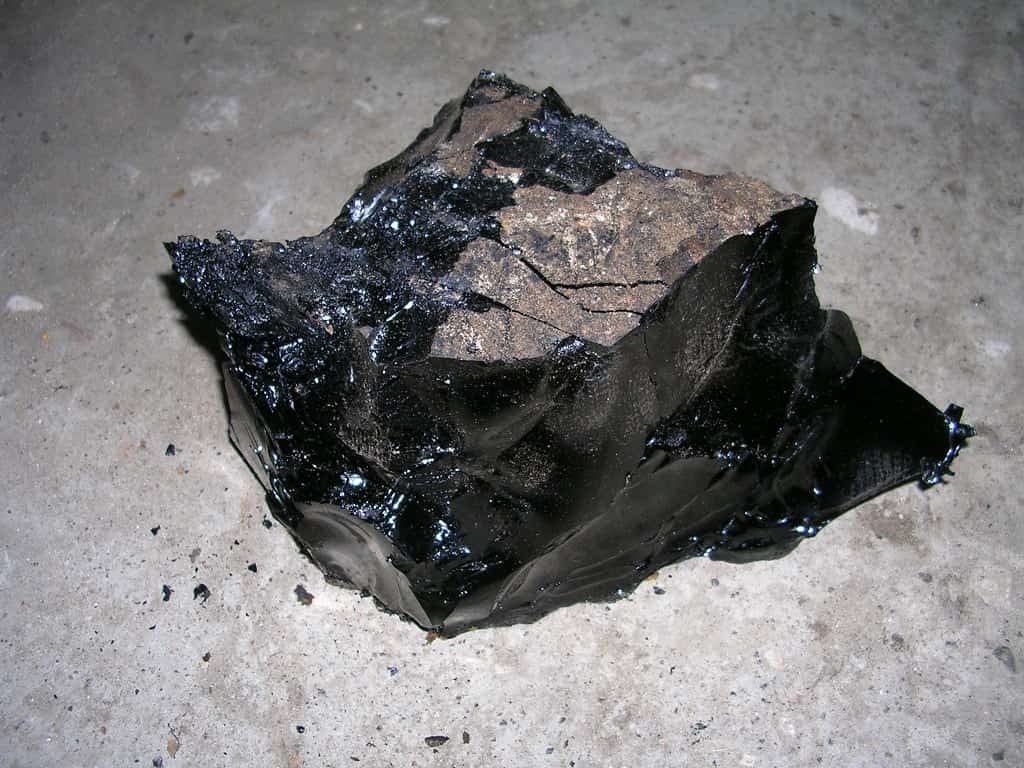
How Toxic Is Bitumen?
Bitumen itself isn’t inherently toxic, but exposure to certain components within bitumen can pose health risks. Bitumen, which is a black, viscous mixture of hydrocarbons derived from petroleum, can contain various compounds such as polycyclic aromatic hydrocarbons (PAHs), which are known to be carcinogenic and toxic to humans.
Exposure to bitumen can occur through inhalation of fumes during hot application or processing, skin contact with bitumen or its derivatives, or ingestion in the case of accidental ingestion or contaminated food or water.
In occupational settings, workers in industries such as road paving, roofing, and waterproofing may be exposed to bitumen and its fumes, potentially leading to respiratory issues, skin irritation, and other health problems if proper safety measures are not taken.
To mitigate risks associated with bitumen exposure, it’s important to follow safety guidelines, use appropriate personal protective equipment, and ensure adequate ventilation in workplaces where bitumen is handled or processed. Additionally, regulatory agencies often provide guidelines and regulations to minimize exposure and ensure worker safety.
Is bitumen bad for your health?
Bitumen itself isn’t necessarily “bad” for your health, but exposure to certain components within bitumen can pose health risks, especially if safety precautions are not followed.
Inhalation of bitumen fumes, particularly during hot application or processing, can irritate the respiratory tract and lead to symptoms such as coughing, shortness of breath, and chest tightness. Prolonged exposure to bitumen fumes may also increase the risk of respiratory issues and lung problems.
Skin contact with bitumen or its derivatives can cause irritation and dermatitis, especially if the skin is not promptly and thoroughly cleaned after exposure. In some cases, prolonged or repeated skin contact may lead to more severe skin conditions.
Additionally, ingestion of bitumen or its components, although unlikely in most scenarios, can cause gastrointestinal issues and potentially more serious health effects if large quantities are ingested.
Occupational exposure to bitumen is a concern for workers in industries such as road paving, roofing, and waterproofing. Proper safety measures, including the use of personal protective equipment and adequate ventilation, are crucial to minimize health risks associated with bitumen exposure in these settings.
Overall, while bitumen itself may not be inherently “bad” for your health, it’s important to take precautions to minimize exposure to its potentially harmful components and to follow safety guidelines and regulations in industries where bitumen is handled or processed.
Read more: MSDS GILSONIITE
Is Bitumen Dangerous?
Bitumen can be dangerous if proper precautions are not taken during handling, processing, and application. While bitumen itself is not inherently toxic, it contains compounds such as polycyclic aromatic hydrocarbons (PAHs) which can pose health risks, particularly with prolonged or repeated exposure.
The main dangers associated with bitumen stem from its potential to emit harmful fumes when heated during application or processing. Inhalation of these fumes can irritate the respiratory tract and lead to respiratory issues. Additionally, skin contact with bitumen can cause irritation and dermatitis, especially if not promptly cleaned.
Occupational exposure to bitumen is a concern in industries such as road paving, roofing, and waterproofing. Workers in these industries may face risks if proper safety measures, such as the use of personal protective equipment and adequate ventilation, are not implemented.
Furthermore, bitumen can pose environmental hazards if not handled and disposed of properly. Spills of bitumen can contaminate soil, water bodies, and ecosystems, leading to adverse effects on wildlife and the environment.
Overall, while bitumen is a valuable material widely used in construction and infrastructure projects, it is essential to recognize and mitigate the potential dangers associated with its handling and use through proper safety protocols and environmental management practices.
Read more: Gilsonite Technical Advantages

Is bitumen toxic when dry?
Bitumen itself is not considered toxic when it is dry because it is composed mainly of hydrocarbons. In its solid state, bitumen does not release fumes or vapors that could be harmful to human health. However, it’s important to note that prolonged or repeated skin contact with dry bitumen can still cause irritation or dermatitis in some individuals, particularly if they are sensitive to the substance.
The primary concerns regarding the toxicity of bitumen arise when it is heated or processed, such as during paving, roofing, or other applications where it is melted or mixed with other materials. In these situations, bitumen can release fumes containing potentially harmful compounds, such as polycyclic aromatic hydrocarbons (PAHs), which are known to be carcinogenic and toxic to humans.
Overall, while dry bitumen itself is not considered toxic, precautions should still be taken to avoid skin contact and minimize exposure, especially in occupational settings where workers may come into contact with bitumen regularly. Proper safety measures, including the use of personal protective equipment, are essential to prevent adverse health effects.
Read More: Gilsonite asphalt
Is bitumen toxic to skin?
Bitumen can be irritating to the skin, particularly upon prolonged or repeated contact. While it’s not inherently toxic in the sense of causing systemic harm through skin absorption, it can cause various levels of irritation, ranging from mild to severe, depending on factors such as concentration, duration of exposure, and individual sensitivity.
Direct contact with bitumen can lead to skin irritation, redness, and dermatitis, especially if the skin is not promptly and thoroughly cleaned after exposure. Some individuals may be more sensitive to bitumen than others, experiencing more pronounced skin reactions even with brief contact.
Occupational exposure to bitumen, particularly in industries such as road paving, roofing, and waterproofing, poses a risk of skin irritation for workers who handle bitumen or work with materials containing bitumen.
To minimize the risk of skin irritation from bitumen, it’s important to follow proper safety procedures, such as wearing appropriate personal protective equipment (e.g., gloves, long-sleeved shirts, pants) and promptly washing any skin that comes into contact with bitumen with soap and water. Additionally, using barrier creams or protective skin creams may provide some protection against skin irritation.
Overall, while bitumen can irritate the skin, it’s typically not considered to be highly toxic to the skin unless exposure is prolonged or repeated without proper protection and hygiene measures.
Read More: Asphalt

Is bitumen poisonous in water?
Bitumen itself is not inherently poisonous in water. Bitumen, being a hydrocarbon-based substance, is insoluble in water and tends to form a thick, viscous layer when it comes into contact with water. However, if bitumen is present in water in significant quantities, it can create environmental hazards and pose risks to aquatic life and ecosystems.
Spills of bitumen into water bodies can have several adverse effects:
- Coating of surfaces: Bitumen can coat surfaces such as water plants, rocks, and sediments, reducing oxygen exchange and sunlight penetration, which can harm aquatic organisms and disrupt ecosystems.
- Smothering of organisms: The thick layer of bitumen can smother aquatic organisms, such as fish, invertebrates, and plants, by blocking their access to oxygen and food.
- Toxicity of components: While bitumen itself may not be highly toxic, it can contain other compounds, such as polycyclic aromatic hydrocarbons (PAHs), which are toxic to aquatic life. These compounds can leach into the water from bitumen and pose risks to organisms.
- Long-term effects: Bitumen spills can have long-term effects on water quality and ecosystem health, depending on factors such as the size of the spill, the type of water body affected, and environmental conditions.
Overall, while bitumen itself may not be directly poisonous in water, its presence in water can have significant environmental consequences and pose risks to aquatic life and ecosystems. Preventing spills and properly managing bitumen handling and transportation are essential to minimize the risk of contamination and protect water resources.
Read More: Gilsonite powder
Is bitumen harmful to fish?
Yes, bitumen can be harmful to fish and other aquatic organisms if they are exposed to it in significant quantities. When bitumen enters aquatic environments, it can have several adverse effects on fish and aquatic life:
- Oxygen depletion: Bitumen can form a thick, impermeable layer on the water surface, reducing the exchange of oxygen between the water and the atmosphere. This can lead to oxygen depletion in the water, which is harmful to fish and other aquatic organisms, as they require oxygen to survive.
- Coating of gills: Fish may come into contact with bitumen either by swimming through it or by consuming contaminated food. Bitumen can coat the gills of fish, impairing their ability to extract oxygen from the water and leading to suffocation.
- Contamination of food sources: Bitumen spills can contaminate aquatic plants and organisms that fish rely on for food. Ingesting contaminated food can expose fish to toxic substances present in bitumen, such as polycyclic aromatic hydrocarbons (PAHs), which can accumulate in their tissues and cause health problems.
- Disruption of behavior and habitat: Bitumen spills can disrupt fish behavior and habitat by altering water quality, blocking sunlight penetration, and contaminating spawning grounds and nursery areas. This disruption can have long-term effects on fish populations and aquatic ecosystems.
Overall, while the extent of harm to fish from bitumen spills depends on factors such as the size of the spill, the type of water body affected, and environmental conditions, it is important to minimize the risk of bitumen contamination in aquatic environments to protect fish and other aquatic life. Preventing spills, implementing prompt response measures, and properly managing bitumen handling and transportation are crucial for mitigating the impact on fish populations and maintaining healthy aquatic ecosystems.
Read More: Gilsonite
Is bitumen emulsion toxic?
Bitumen emulsion, a mixture of bitumen (asphalt) and water stabilized with emulsifying agents, is generally considered less toxic than pure bitumen because it contains a lower concentration of volatile organic compounds (VOCs) and polycyclic aromatic hydrocarbons (PAHs). However, like any chemical substance, bitumen emulsion can still pose health and environmental risks if not handled properly.
Here are some considerations regarding the toxicity of bitumen emulsion:
- Inhalation: Bitumen emulsion may still release fumes when heated during application, so inhalation of these fumes should be minimized to prevent respiratory irritation and other health issues. Proper ventilation and respiratory protection are important when working with heated bitumen emulsion.
- Skin contact: While bitumen emulsion is generally less irritating to the skin than pure bitumen, it can still cause skin irritation or dermatitis, particularly with prolonged or repeated contact. Protective clothing, gloves, and thorough washing after exposure are recommended to minimize skin irritation.
- Environmental impact: Spills of bitumen emulsion can still have environmental consequences, particularly if they occur in sensitive ecosystems or water bodies. The emulsifying agents and additives used in bitumen emulsion may have environmental effects, and cleanup efforts should be conducted promptly to minimize harm to the environment.
- Disposal: Proper disposal of bitumen emulsion and related materials is important to prevent contamination of soil, water, and air. Recycling or proper disposal methods should be followed according to local regulations.
Overall, while bitumen emulsion may have lower toxicity compared to pure bitumen, it is still important to handle it with care and follow safety guidelines to minimize health and environmental risks. Proper training, use of personal protective equipment, and adherence to safety protocols are essential when working with bitumen emulsion to ensure the protection of workers and the environment.

Is bitumen paint toxic?
Bitumen paint, commonly used as a protective coating for various surfaces such as metal, concrete, and wood, typically contains bitumen (asphalt) as its primary ingredient along with other additives and solvents. While bitumen paint is not inherently toxic, it can pose health and environmental risks if not handled properly.
Here are some considerations regarding the toxicity of bitumen paint:
- Inhalation: Inhalation of bitumen paint fumes, particularly during application in poorly ventilated areas, can cause respiratory irritation and discomfort. Proper ventilation and respiratory protection should be used to minimize exposure to fumes.
- Skin contact: Direct skin contact with bitumen paint can cause skin irritation, dermatitis, and other skin issues, especially if not promptly washed off. Protective clothing, gloves, and proper hygiene practices should be followed to prevent skin exposure.
- Environmental impact: Bitumen paint contains solvents and other additives that can have environmental effects if released into the environment. Spills or improper disposal of bitumen paint can contaminate soil, water, and air, harming wildlife and ecosystems. Proper handling, storage, and disposal practices should be followed to minimize environmental impact.
- Fire hazard: Bitumen paint is flammable and should be handled with caution to prevent fire hazards. Storage and use should comply with fire safety regulations, and appropriate fire suppression measures should be in place.
Overall, while bitumen paint is widely used for its protective properties, it is important to handle it with care and follow safety guidelines to minimize health and environmental risks. Proper ventilation, personal protective equipment, and adherence to safety protocols are essential when working with bitumen paint to ensure the protection of workers and the environment.
Read More: natural bitumen
is bitumen toxic to plants
Bitumen, in its pure form, is not considered toxic to plants because it is composed primarily of hydrocarbons and does not contain substances known to be harmful to plant life. However, the presence of bitumen in soil or water can still have negative effects on plant growth and health due to physical and chemical properties.
Here are some ways in which bitumen can affect plants:
- Soil contamination: Bitumen spills or leaks can contaminate soil, potentially altering its physical properties such as porosity and water retention. This can hinder root growth and nutrient uptake by plants, leading to reduced growth and productivity.
- Oxygen exchange: Bitumen can form a barrier on the soil surface, reducing oxygen exchange between the soil and the atmosphere. This can inhibit microbial activity in the soil, which plays a crucial role in nutrient cycling and soil health.
- Water contamination: Bitumen spills in water bodies can coat aquatic plants and interfere with their ability to photosynthesize and absorb nutrients. This can disrupt aquatic ecosystems and harm plant populations.
- Heat absorption: Bitumen has a dark color, which absorbs more heat from sunlight compared to lighter-colored surfaces. This can lead to higher soil temperatures in areas where bitumen is present, potentially affecting plant growth and physiology.
While bitumen itself may not be toxic to plants, the environmental consequences of bitumen contamination can indirectly harm plant life by altering soil and water conditions. Preventing spills and properly managing bitumen handling and transportation are important measures to minimize the risk of contamination and protect plant ecosystems. Additionally, prompt cleanup and remediation efforts are essential in mitigating the impact of bitumen spills on plant health and ecosystem integrity.
Read More: Natural asphalt
is bitumen asbestos
No, bitumen is not asbestos. Bitumen and asbestos are two distinct substances with different chemical compositions and properties.
Bitumen, also known as asphalt, is a dark, viscous material derived from crude oil through a process called fractional distillation. It is commonly used in road construction, roofing, waterproofing, and various industrial applications due to its waterproofing and adhesive properties.
Asbestos, on the other hand, is a naturally occurring mineral fiber known for its strength, heat resistance, and insulating properties. Asbestos has been widely used in construction materials such as insulation, roofing, flooring, and fireproofing products. However, asbestos is highly hazardous when its fibers become airborne and are inhaled, as they can cause serious respiratory diseases, including lung cancer, mesothelioma, and asbestosis.
While bitumen and asbestos may sometimes be found together in certain construction materials or products, such as asphalt roofing shingles that contain asbestos fibers for reinforcement, they are not the same substance, and their hazards and uses are distinct. It’s important to handle both bitumen and asbestos with caution and follow appropriate safety protocols to minimize health risks associated with exposure.

do asphalt fumes cause cancer
The potential carcinogenicity of asphalt fumes, which are emitted during the heating and application of asphalt/bitumen, has been a subject of research and debate in occupational health circles. Asphalt fumes contain various compounds, including polycyclic aromatic hydrocarbons (PAHs), which are known carcinogens.
While there is evidence suggesting that long-term exposure to high levels of asphalt fumes in certain occupational settings, such as asphalt paving and roofing, may increase the risk of certain cancers, such as lung cancer, the exact relationship between asphalt fumes and cancer is complex and not fully understood.
Several factors influence the potential health risks associated with asphalt fume exposure, including:
- Duration and intensity of exposure: Prolonged and high-level exposure to asphalt fumes may pose a greater risk of adverse health effects, including cancer.
- Composition of asphalt: The composition of asphalt can vary depending on factors such as crude oil source, additives, and processing methods, which can influence the types and concentrations of carcinogenic compounds present in asphalt fumes.
- Other exposures: Workers in industries where asphalt is used may also be exposed to other carcinogenic substances, such as diesel exhaust and silica dust, which can contribute to overall cancer risk.
- Individual susceptibility: Factors such as genetics, lifestyle, and pre-existing health conditions can influence an individual’s susceptibility to the carcinogenic effects of asphalt fumes.
While some studies have suggested an association between asphalt fume exposure and cancer risk, others have found inconclusive or conflicting results.
Regulatory agencies such as the Occupational Safety and Health Administration (OSHA) and the International Agency for Research on Cancer (IARC) have classified certain asphalt-related exposures as “possibly carcinogenic to humans” based on limited evidence from animal studies and inadequate evidence from human studies.
Overall, while the potential carcinogenicity of asphalt fumes remains a concern, more research is needed to better understand the risks and develop effective strategies to protect workers’ health in asphalt-related industries.
Implementing appropriate engineering controls, such as ventilation and respiratory protection, and following recommended exposure limits and safety guidelines can help minimize the risks associated with asphalt fume exposure in the workplace.
